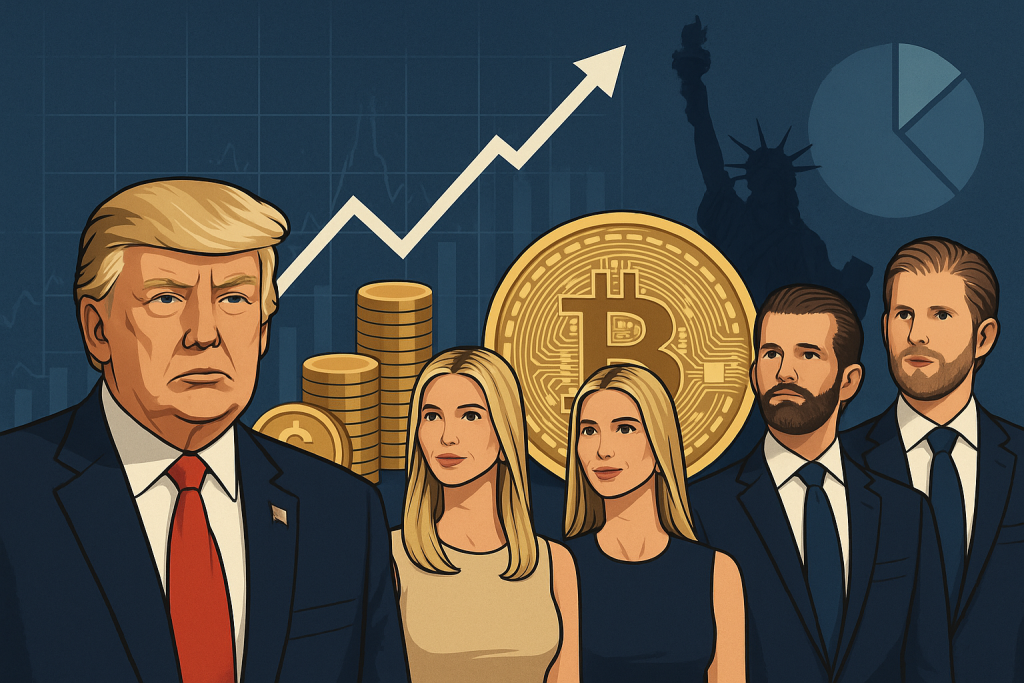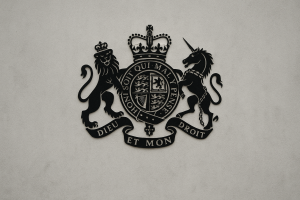Introduction
In September 2025 the Trump family entered the cryptocurrency spotlight in dramatic fashion with the public trading debut of their World Liberty Financial token, WLFI. The token’s first day performance created billions in paper gains for the Trump family while igniting one of the most heated debates about ethics, politics, and finance in recent memory. What unfolded was more than a simple market event. It became a case study of how personal brand, political power, and speculative finance can collide. This article provides a detailed analysis of the WLFI launch, its financial mechanics, its regulatory implications, the speculative fervor that followed, and the wider controversies it has triggered.
The Debut Of WLFI
World Liberty Financial was launched the previous year by the Trump family and their partners as a decentralized finance platform. On its first day of open market trading in September, the WLFI token experienced a meteoric rise. The price surged above thirty cents before dropping to around twenty cents by the end of the day. Trading volume was staggering, with approximately one billion dollars worth of WLFI changing hands in the first hour alone. This activity pushed the market capitalization of WLFI to nearly seven billion dollars, making it one of the thirty largest cryptocurrencies by value at the time.
This launch demonstrated how a well known name and political brand can attract immediate market attention. Yet it also highlighted the volatility of celebrity backed cryptocurrencies, where value is driven more by sentiment than by underlying fundamentals.
Expansion Of Trump Family Wealth
The Trump family owned roughly a quarter of all WLFI tokens at the time of launch. This ownership instantly translated into approximately five billion dollars in paper wealth once trading began. In addition, since the platform’s founding the family had already generated around five hundred million dollars in realized gains.
At launch, however, family members were barred from selling their holdings. This restriction stemmed from the governance structure of World Liberty Financial, where trading rights were only unlocked after a holder vote earlier in the summer. Initially the tokens functioned primarily as governance instruments, giving holders the ability to influence platform rules and code updates but not the right to trade openly. Once the vote allowed trading, speculative potential unlocked, driving the surge in valuation.
Speculation And Market Dynamics
The WLFI token quickly became a magnet for speculative trading. The combination of Trump family branding, the association with political power, and the promise of favorable regulatory conditions created enormous demand. Listings on global exchanges further fueled trading frenzy.
The immense early volume underscored both enthusiasm and risk. Such heavy trading concentrated in the hands of a few early holders raised the potential for sharp price swings. Market observers warned of the dangers of pump and dump dynamics, where early insiders might gain disproportionately while late retail investors could face steep losses.
Regulatory And Ethical Controversies
The WLFI launch immediately set off alarms among ethics watchdogs and political opponents. Critics pointed to the overlap between the Trump family’s financial ventures and the administration’s broader regulatory stance toward cryptocurrency. With the president actively shaping national policy in this domain, skeptics argued that the family stood to personally profit from favorable regulations.
Democratic lawmakers called for greater transparency, warning of conflicts of interest that undermined public trust. Ethics organizations emphasized that this blending of political authority and financial gain was without precedent in modern American history.
The White House defended its position, noting that the president’s assets were placed in a family trust managed by his children, thereby avoiding direct conflicts. Still, the perception of impropriety continued to dominate public discussion.
The Structure Of World Liberty Financial
At its core, World Liberty Financial presents itself as a decentralized finance platform designed to offer governance rights to token holders. The WLFI token was originally created to allow community voting on changes to the code and other operational aspects. In addition, the platform issued a stablecoin intended to maintain price stability while functioning as a transactional asset.
The shift in July 2025 to allow WLFI to be traded marked a turning point. Once tokens moved from being purely governance based instruments to tradable assets, speculative interest skyrocketed. This structural evolution positioned WLFI as both a governance tool and a speculative vehicle, blurring the line between community participation and financial investment.
Political Context And Perceptions Of Corruption
The timing of WLFI’s launch aligned with growing concerns about the Trump administration’s approach to ethics and governance. Critics had already expressed alarm at the launch of a Trump branded memecoin earlier in the year, which raised large sums from loyal supporters and wealthy backers. High profile private events tied to token promotions further reinforced the impression of personal profit taking from political power.
Legal scholars and former prosecutors described the phenomenon as an unprecedented erosion of ethical standards. They noted that deregulation of the crypto sector under the administration, combined with family run crypto ventures, suggested a troubling willingness to conflate public duty with personal enrichment.
International Dimensions And Foreign Investment
WLFI also attracted international attention and foreign capital. Reports indicated that large funds from the United Arab Emirates and other regions invested in related stablecoin projects linked to the Trump family’s crypto ventures. This raised questions of national security and constitutional propriety, as foreign entities gained exposure to assets tied directly to the president’s family.
The intertwining of global finance, crypto markets, and political influence intensified concerns. Critics warned that this set a dangerous precedent for foreign governments or investors to gain indirect leverage through financial involvement in ventures tied to national leaders.
Broader Implications For The Cryptocurrency Market
The WLFI launch marked a turning point in the relationship between politics and digital assets. On one hand it legitimized crypto in the eyes of millions by attaching it to one of the most recognizable political brands in the world. On the other, it amplified fears of excessive speculation, manipulation, and corruption.
The rapid rise and fall of WLFI’s value highlighted how political celebrity alone can create market capitalization rivaling established blockchain projects built over years. This phenomenon risks incentivizing other high profile figures to create their own tokens, not for technological innovation but for speculative hype.
Conclusion
The debut of World Liberty Financial’s WLFI token represents far more than a cryptocurrency launch. It encapsulates the fusion of branding, politics, and finance in the digital age. In just one day it created billions in paper wealth, galvanized global speculation, and provoked urgent questions about ethics and governance.
The Trump family’s involvement raises concerns that extend beyond finance to the very integrity of democratic institutions. Can financial markets remain fair when political leaders or their families wield such influence over both regulation and investment? What protections are needed for retail investors who may be drawn in by hype? And how should nations guard against foreign influence in ventures tied to political figures?
These questions will shape not only the trajectory of WLFI but also the evolving relationship between cryptocurrency, governance, and political power. Whether viewed as innovation or impropriety, the WLFI saga is a defining chapter in the history of digital finance in 2025.



